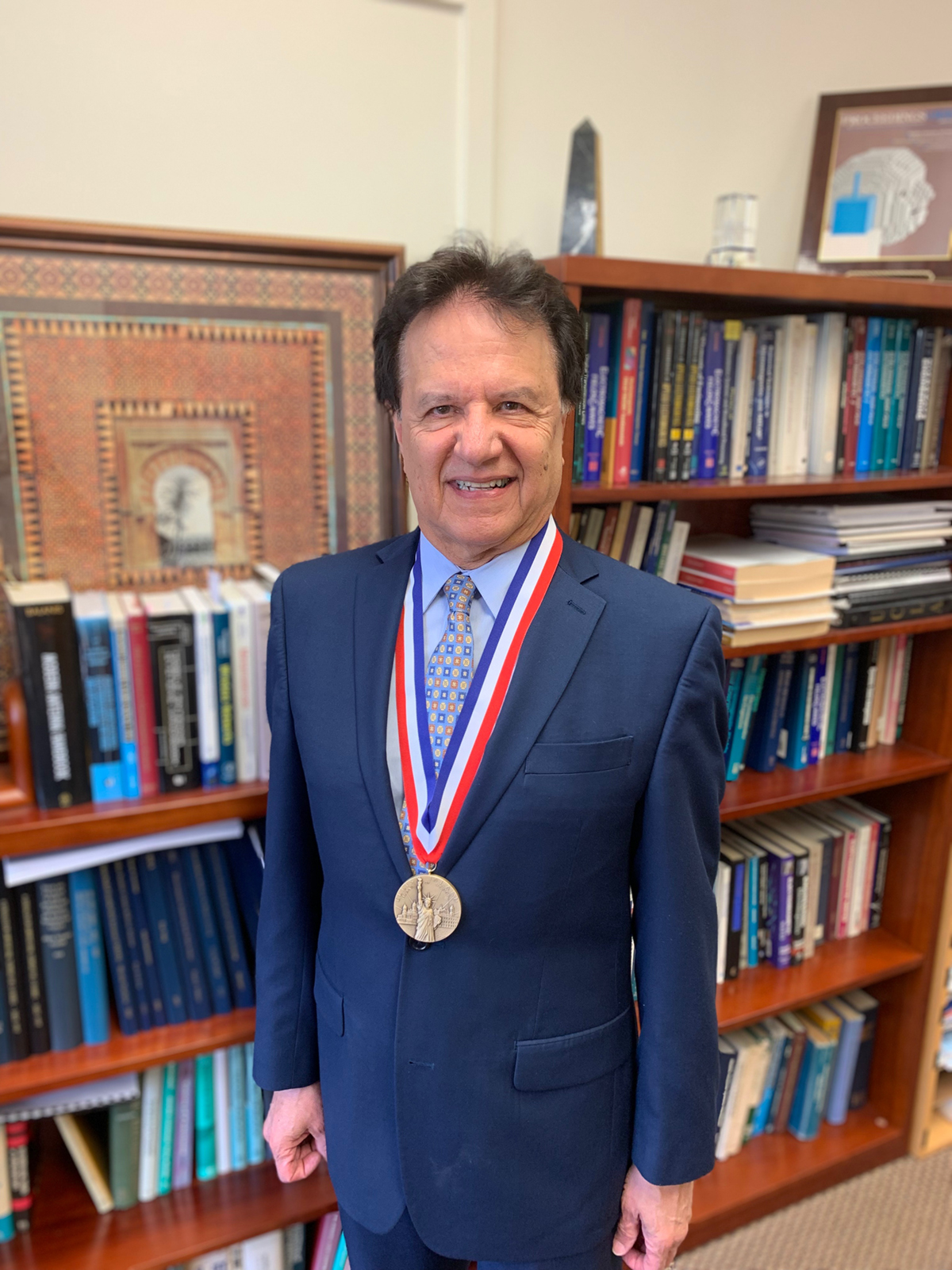Engineering professor awarded Ellis Island Medal of Honor for antenna work

Yahya Rahmat-Samii, a distinguished professor of electrical engineering, received an Ellis Island Medal of Honor on May 11. He was honored for his work teaching and researching in the field of electromagnetic communications. (Courtesy of UCLA Newsroom)
By Panagiotis Giannoulias
May 24, 2019 12:04 a.m.
Yahya Rahmat-Samii’s lifelong passion for mathematics and space brought him from Iran to the United States to research antennas in the field of electromagnetics.
“Like van Gogh used his brush to paint on canvas, so electromagnetic scientists are artists who use their antennae to paint electromagnetic waves,” he said.
Rahmat-Samii, a distinguished professor of electrical engineering and electromagnetics, received the Ellis Island Medal of Honor in a ceremony on Ellis Island on May 11. The medal is awarded to people whose work has impacted American society.
Other recipients this year included well-known figures such as Rep. Adam Schiff (D-Calif.) and Eric Schmidt, former CEO of Google. Notable past recipients include seven U.S. presidents, Henry Kissinger, Rosa Parks and Gregory Peck.
Rahmat-Samii, who was born in Iran, received the award for his work with antennas and electromagnetic microwaves. He currently directs UCLA’s Antenna Research, Analysis, and Measurement Laboratory, which researches wireless communication.
He is also the Northrop Grumman Chair in Electrical Engineering/Electromagnetics and a member of the National Academy of Engineering. Rahmat-Samii has won more than 40 awards for teaching and research over 30 years.
Rahmat-Samii attended the University of Tehran before coming to the United States to pursue his graduate studies at University of Illinois, Urbana-Champaign. He said he decided to leave Iran because the best electromagnetic and antenna research was taking place in the United States.
From there, he joined the NASA Jet Propulsion Laboratory in Pasadena.
“From childhood, I was always fascinated from space,” he said. “So that probably at the end brought me to Jet Propulsion Laboratory, because they always were excited with looking towards the heavens.”
Rahmat-Samii worked at JPL for over 10 years. While there, he became one of the youngest senior research scientists in the lab’s history.
However, Rahmat-Samii said he had always loved teaching, which brought him to UCLA in 1989.
Vignesh Manohar, a graduate student of electrical engineering who works under Rahmat-Samii, said he considered Rahmat-Samii a role model because he stayed involved with students in and out of the classroom even as he was busy making advancements in the field of electrical engineering.
“He’s been in this field forever, and still every day that we meet him, he seems to be growing younger and younger in terms of his field,” Manohar said. “Finding a professor like him who gets involved in every aspect of research, be it a writing paper, be it doing your research, be it his involvement with his products that we have in the lab, (is amazing).”
Aydin Babakhani, an associate professor of electrical engineering at UCLA and a former student of Rahmat-Samii, said he found Rahmat-Samii’s reception of the award particularly impressive because Rahmat-Samii had to compete with notable figures across many fields.
“It’s not just academia. He is getting the same award that presidents are getting,” Babakhani said.
Babakhani said he felt the award brings prestige to the entire electrical engineering department.
“We are all honored to have Dr. (Rahmat-Samii) winning this award,” Babakhani said. “When you see the impressive list of people winning this award, and his office next to mine, makes it impressive.”
Rahmat-Samii said he felt that this award was more special than others he had received because it recognized his achievements not just within the field of electrical engineering, but for society as a whole.
“This one is very dear to me, because it represents not necessarily my scientific work per se, but also recognition that the kind of work (scientists) do is appreciated in society,” he said.
He added he sees this award as a sign he has been moving in the right direction.
“It adds another stamp (of approval),” Rahmat-Samii said. “(It says,) ‘Do your work! And make sure you share your knowledge with others.’”

